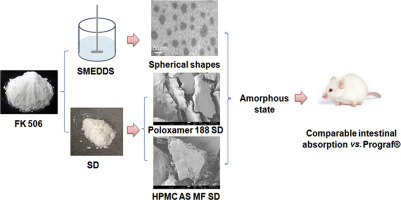- Home
- Blog
- News
- Basics
- Sources
- Agencies, Regulatory & Organisations
- CERSI Excipients Browser
- Excipient Report
- Excipient DMF List
- EXCiPACT Certified Companies
- Excipient Documentation
- Excipient EINECS Numbers
- Excipient E-Numbers
- FDA Inactive Ingredient List
- FDA GRAS Substances (SCOGS) Database
- IPEC Americas
- USP - U.S. Pharmacopeia
- Definitions
- Whitepapers / Publications
- Supplier
- Services
- Media
- Events
- 1st pharmaexcipients Poster Award
- Event Calendar
- Events featured by pharma-excipients
- 4th Annual Formulation & Drug Delivery Congress
- DDF Summit
- ExcipientFest Americas
- ExcipientFest Asia
- Global CompliancePanel
- International Conference and Exhibition on Pharmaceutics & Novel Drug Delivery Systems
- Formulation & Drug Delivery USA Congress
- Laboratory Medicine 2018
- Making Pharmaceuticals Europe
- Making Pharmaceuticals Exhibition
- Pharma Integrates
- PharmaExcipients China @CPhI China
- TTC Technology Training Center
- Jobs
- Online Sourcing
- Contact
29. August 2018
Conversion of liquid and semisolid lipids into free flowing powders is an advantageous technique, as the carriers display high surface area, strong adsorption capacity, ease of processing, and ability to generate lipid loaded free flowing powders which can be converted to solid dosage forms like tablets and capsules. A combination of density, adsorption capacity and desorption is found to be of importance in the selection of the right adsorbent. Adsorbents like magnesium aluminium silicates...
15. June 2018
Semisolid self-microemulsifying drug delivery system (SMEDDS) with optimized drugloading capacity, stability, dispersibility in aqueous media and invitro drug release profile, was evaluated in vivo regarding effects on pharmacokinetics of acyclovir, an antiviral with low bioavailability (BA) and short half-life (t1/2). Additional goal of this study was evaluation of safety of this semisolid SMEDDS consisted of medium chain length triglycerides (oil) (10% w/w), macrogolglycerol hydroxystearate...
02. May 2018
An increase in the proportion of poorly aqueous soluble drugs that exhibit problems in oral bioavailability is one of the major problems in formulation development. Formulation of lipid-based nanocarriers, such as self-nanoemulsifying drug delivery systems (SNEDDS) and self-microemulsifying drug delivery systems (SMEDDS) have received a lot of attention in recent years as an approach for overcoming poor solubility and oral bioavailability of drugs. SNEDDS are isotropic mixtures of oil,...
11. December 2017
This study aimed to compare the dissolution and the intestinal absorption of tacrolimus in self-microemulsifying drug delivery system (SMEDDS) and solid dispersion (SD). Poloxamer 188 SD was prepared by the combination of the solvent evaporation method and the freeze drying method. Hydroxypropyl methylcellulose (HPMC) SD was prepared by the solvent evaporation method combined with the vacuum drying method.
11. December 2017
Use of a self-microemulsifying drug delivery system (SMEDDS) is widely known as one of the most effective approaches to overcome problems associated with low solubility and poor oral absorption of water-insoluble drugs. Previously, we have demonstrated that a super saturable SMEDDS (SuSMEDDS) greatly contributed to enhanced dissolution and oral absorption of valsartan (VST), a drug with poor solubility in water ...
08. November 2016
Abstract The purpose of this study was to investigate the effect of ionization of drug on drug solubilization in SMEDDS (self-microemulsifying drug delivery system) prepared using Capmul MCM and caprylic acid. Solubilization capacity of blank SMEDDS dispersions for danazol, indomethacin and haloperidol as model drugs was determined. Based on the outcomes of solubilization capacity study, drug-loaded SMEDDS formulations were prepared and subjected to dispersion/precipitation study and droplet...
07. August 2016
Abstract The purposes of the present study were to develop a self-microemulsifying drug delivery system (SMEDDS) containing bortezomib, a proteasome inhibitor. The solubility of the drug was evaluated in 15 pharmaceutical excipients. Combinations of oils, surfactants and cosurfactants were screened by drawing pseudo-ternary phase diagrams. The system exhibiting the largest region of microemulsion was considered optimal. Bortezomib SMEDDS spontaneously formed a microemulsion when diluted with an...
02. May 2016
To improve the dissolution and oral bioavailability (BA) of atorvastatin calcium (ATV), we previously introduced an optimized self-microemulsifying drug delivery system (SMEDDS) using Capmul® MCM (oil), Tween® 20 (surfactant), and tetraglycol (cosurfactant). In this study, various solid carriers were employed to develop a solidified SMEDDS (S-SMEDDS): mannitol (M) and lactose (L) as water-soluble carriers, and Sylysia® 350 (S) and Aerosil® 200 (A) as water-insoluble carriers. Maximum...
03. March 2016
Conversion of liquid and semisolid lipids into free flowing powders is an advantageous technique, as the carriers display high surface area, strong adsorption capacity, ease of processing, and ability to generate lipid loaded free flowing powders which can be converted to solid dosage forms like tablets and capsules. A combination of density, adsorption capacity and desorption is found to be of importance in the selection of the right adsorbent. Adsorbents like magnesium aluminium silicates...
17. February 2016
he aim of the present study was to develop a novel semi-solid self-microemulsifying drug delivery system (SMEDDS) using Gelucire® 44/14 as oil with strong solid character to improve the oral bioavailability of poorly soluble drug valsartan. The solubility of valsartan in various excipients was determined, the pseudo-ternary phase diagram was constructed in order to screen the optimal excipients, and DSC analysis was performed to evaluate the melting point of SMEDDS. The optimal drug-loaded...






